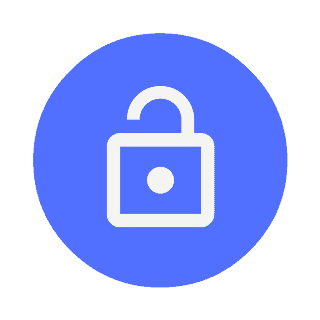300% INCREASE IN CYBERATTACKS
In 2020, cyberattacks increased by 300% as hackers increase their efforts to exploit vulnerable websites with poor security.
50% OF ALL HACKS & BREACHES
Nearly half of all cyberattacks prey on small to medium-sized businesses. Hackers know most of them don’t have solid security measures in place.
45% OF ALL WEBSITE OWNERS
Almost half of all website owners report they don’t have solid security measures in place to defend their websites against attacks.
30,000 WEBSITES HACKED DAILY
As hackers become more sophisticated, 30,000 websites are successfully hacked each day, leaving website owners to deal with the destruction.
WordPress is one of the most popular web development tools on the planet. While is a very secure platform, the themes and plugins we use, account for 96% of know vulnerabilities. WordPress Plugins: 88% WordPress Themes: 8%
While the industry is generally very good at immediately disclosing vulnerabilities and fixing them, many website owners continue to use insecure versions. It’s usually because they are busy running their business and not paying attention to the technical aspects of their websites.
The Top 5 WordPress Security Issues
- Brute Force Attacks
WordPress brute force attacks refer to the trial and error method of entering multiple username and password combinations over and over until a successful combination is discovered. The brute force attack method exploits the simplest way to get access to your website: Your WordPress login screen. - File Inclusion Exploits
File inclusion exploits occur when vulnerable code is used to load remote files that allow attackers to gain access to your WordPress website’s wp-config.php file, one of the most important files in your WordPress installation. - SQL Injections
Your WordPress website uses a MySQL database to operate. SQL injections occur when an attacker gains access to your WordPress database and to all of your website’s data. SQL injections can also be used to insert new data into your database, including links to malicious or spam websites. - Cross-Site Scripting
Cross-site scripting vulnerabilities are the most common vulnerability found in WordPress plugins. The basic mechanism works like this: an attacker finds a way to get a victim to load web pages with insecure javascript scripts - Malware
Malware, short for malicious software, is code that is used to gain unauthorized access to a website to gather sensitive data. A hacked WordPress website usually means malware has been injected into your website’s files.
A hacked website can be a headache for a number of reasons. Of course, it affects people trying to access your website but it can also be a security risk for them. It especially will have a huge impact on your SEO rankings. Google and other search engines quickly blacklist websites that are discovered to be hosting malicious files or scripts. Some browsers, like Google Chrome and Firefox, will display warning signs to users or completely block the ability to view a suspicious website.
10 Thing you need to know about WordPress Website Security
- WordPress site owners and admins need to be proactive about site security.
The reality is WordPress site owners and admin users need to be proactive about site security. Just like locking the doors of your house, investing in an alarm system and paying for insurance, your website should have security and safety measures in place. Better WordPress security can be achieved in just a few simple steps. - Vulnerable plugins & themes are the #1 reason WordPress sites get hacked.
Having a vulnerable plugin or theme for which a patch is available but not applied is the number one culprit of hacked WordPress websites. This means that most vulnerabilities are exploited AFTER a patch for the vulnerability was released. - The quality of your web hosting matters to your site’s security.
Not all web hosts are created equal, and choosing one solely on the price alone can end up costing you way more in the long run. Most shared hosting environments are secure, but some do not adequately separate user accounts. - The plugins and themes you install matter to your site’s security.
Only install WordPress plugins and themes from trusted sources. Why?Unverified versions can contain malicious code. - Updates matter. A lot.
When your WordPress site is running outdated versions of plugins, themes or WordPress, you run the risk of having known exploits on your website. And that brings us back to #2 in this list: vulnerable plugins and themes are the #1 reason WordPress sites get hacked. - The quality of your password matters.
Your WordPress login is the most commonly attacked vulnerability because it provides the easiest access to your website’s admin page. - If you don’t have a backup plan in place, you’re at risk for losing your site.
By default, WordPress doesn’t have a built-in backup system. What are you doing to backup your website? - The best way to secure your WordPress admin login is with two-factor authentication.
One of the best ways to secure your WordPress site is with two-factor authentication. In fact, Google stated that two-factor authentication can stop 100% of automated bot attacks! - WordPress security myths exist, so know what’s actually true.
You’ll find lots of security advice floating around the internet from well-intentioned people who genuinely want to help. Unfortunately, some of this advice is built on WordPress security myths and don’t actually add any additional security to your WordPress website. In fact, some WordPress security “tips” may increase the likelihood you will run into issues and conflicts. - Have a solid WordPress security checklist like this one. Good news!
Most WordPress security issues can be prevented if site owners simply follow WordPress security best practices.
If you need more information or would like a WordPress security expert to contact you feel free to send us an email

